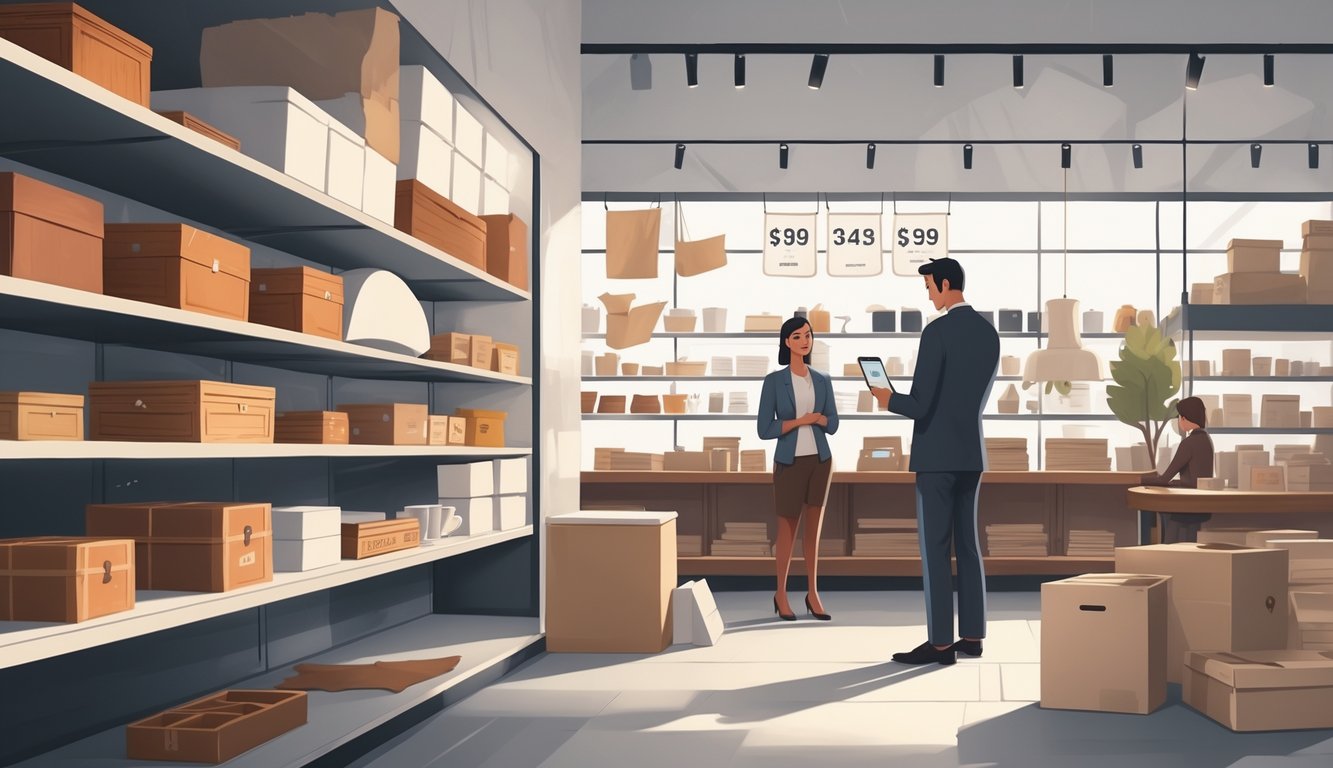
The Real Estate and Property Tax Angle
Forget patterns—random price jumps, weird shortages, and the smell of stripped-down displays probably all tie back to rising real estate costs and property tax hikes. Even the frozen veggie aisle isn’t safe. Analysts seem lost too: new retail buildouts just stop, classic fixtures vanish, and nobody explains. Customers? We just end up guessing.
Property Taxes and Their Influence on Retail
So, property taxes. I keep thinking, “Okay, this is the ceiling,” but nope—there’s always another hike. I’ve seen grocers and mall folks I know lose it over what sounds like a tiny 2–3% bump, but if you’re barely scraping by, that’s the difference between keeping those old-school wood shelves and swapping everything for cheap metal. It’s not just me ranting—2025’s looking wild, with new changes popping up everywhere (see this piece on the evolution of property taxes). Cue the panic.
One time, this manager—Bill, let’s call him Bill—just… stopped updating any signs for months. Why? Property tax bill landed 8% over what he budgeted. His big plan? Freeze. Nostalgic glass cabinets? Dumped for ugly steel. Nobody said a word. Maybe everyone thought it was a “design refresh.” Or maybe nobody cared. I still can’t tell.
Real Estate Trends Affecting Store Inventories
Here’s what bugs me: property values climb, and suddenly the baking aisle looks like the aftermath of a hurricane. All the “heritage” displays, the weird retro sodas, the stuff you kinda liked? Gone. Developers hype up the neighborhood, rents go up, and poof, there goes the budget for anything not nailed down. Warehousing? Good luck. Those backrooms are now so expensive that stores barely stock enough to get through the week.
Asked a coworker why the shelves looked so sad and she just rolled her eyes—“Landlords.” That’s the answer. Fannie Mae says price growth might slow in 2025 (MoneyWise), but nobody’s holding their breath. Some stores are already ditching “classic” stuff now, just in case things never get better.
And let’s be honest, sometimes the reason your favorite shopping basket disappears is because somebody in accounting hit “delete” on a spreadsheet column. Grandma notices—she always notices. “Didn’t they have a better bread rack before?” No idea, Grandma. Maybe.
Expert Insights and Commentary
Prices keep creeping up and, honestly, half the stuff I used to buy is just gone. Or replaced with something that feels… off. Walked into my usual spot for cotton shirts—nope, all polyester now. Light blue Smith pattern? Not a chance. I’m not even sure anyone cares. Aisles look empty, and every new label screams “improved.” Improved for who? I don’t buy it. The experts blame supply chains and tariffs, but I swear, half of it is just companies being cheap.
Perspectives from Johnson, Mitchell, and Smith
Johnson’s obsessed with his spreadsheets—he keeps saying global supply chaos is here till, what, late 2025? Mitchell butts in: “Those raw material contracts can’t handle an 11% tariff spike.” If I hear, “We’re looking at synthetics,” one more time, I’m out.
Smith—he’s on the buying team—claims they swap in nylon the minute cotton shipments get stuck at the docks. He’s right, I guess. People think they’re still buying flannel chinos, but it’s not the same. Smith’s been on those calls; nobody wants to pay for the real stuff. Everyone wants the look, nobody wants the cost.
Every time I try to talk about telling customers what’s changed, it turns into a debate about whether “heritage” matters if the tag looks old enough. Of course, the real stuff disappears and nobody’s told. Why did I ever think honesty was a thing here?
Views from Griffith, Harper, and Miller
Griffith barges into calls grumbling about silk blends getting axed from shelves. Miller’s all about “faux cashmere”—but she just buys thrift anyway. In Minnesota, thrift stores are packed, which is hilarious if you think about it (here’s a local story).
The main complaint? “Pick between cheap synthetics or pay for overpriced designer.” Griffith tried to show a chart about price elasticity, but it got deleted. Harper says textile innovation is great—unless you actually wear the stuff. Her daughter only buys vintage, says new stuff feels disposable.
Weird detail: I found wool socks at a garage sale, still tagged from 1992. Better than any of my “eco-polyester” pairs. Maybe Miller’s right; durability wasn’t just a slogan.
Analysis from Phillips, White, Bright, and Carr
Phillips throws out stats—“18% drop in all-wool since 2022.” White jumps in: luxury’s “aspirational, not attainable.” Sure, but cheap blends fly off shelves. Carr says, “Brand loyalty’s just about what you can still afford.” Maybe he’s got a point.
Bright always has a story about jeans launches bombing—2023 denim looked right, but after two hours, knees bagged out. People still bought them. Phillips ran a blind test—most shoppers couldn’t tell the difference until after a wash. But we all end up on message boards complaining nothing lasts.
Not just nostalgia. Carr wound up in a Slack channel meant for rival planners; turns out, they all got the same “cut costs” memo. If I don’t check the weave myself, I don’t trust the “classic” tag anymore.
Looking Ahead: The Future of Classic Materials in Retail
Can’t find my shopping list—whatever, nobody reads paper tags anyway. Stores drag old wood counters to the back, slap up prices whenever they feel like it (MDF up 19% last quarter, who saw that coming?). Every year, cashmere blends disappear, and nobody writes about how draining it is for buyers to chase new minimums. Corners get cut everywhere.
Adapting to Ongoing Economic Change
It’s chaos. Steel, oak, chipboard—prices tick up, checkout never gets easier. Bulk discounts? Forget it unless you have secret connections. One buyer told me she has to chase five quotes to match last year’s price. So what happens to classic window displays, hardwood racks, glass counters? Gone, or swapped for cardboard and plastic.
If “timeless feel” means foamboard now, who’s counting the hidden losses? Smaller chains scramble—cardboard everywhere, plastic hooks hanging on for dear life. Trade journals talk up retail adaptation, but surveys say half of shoppers only stay if stores blend online and in-person. Loyalty? It’s fragile. Rising rents just drown out whatever nostalgia’s left.
Opportunities for Innovation and New Deals
Last expo, someone tried to sell me a recycled denim shelf as “luxury.” Nobody blinked. Now it’s all about closed-loop, mushroom shelves, whatever’s trendy (see this material showcase). “Material swaps boost revenue,” a consultant told me. Maybe. Warehouse folks now juggle five suppliers instead of two.
PVC spikes? Suddenly, management’s fine with weird upcycled crate walls, just to dodge shipping costs. “Free drop-off for old stuff” is a marketing trick and a cost cut rolled into one (retailers and sustainability). Supposedly, stores “negotiating greener alternatives” have doubled since 2023—heard that at a breakfast with bad coffee and too much oat milk.



